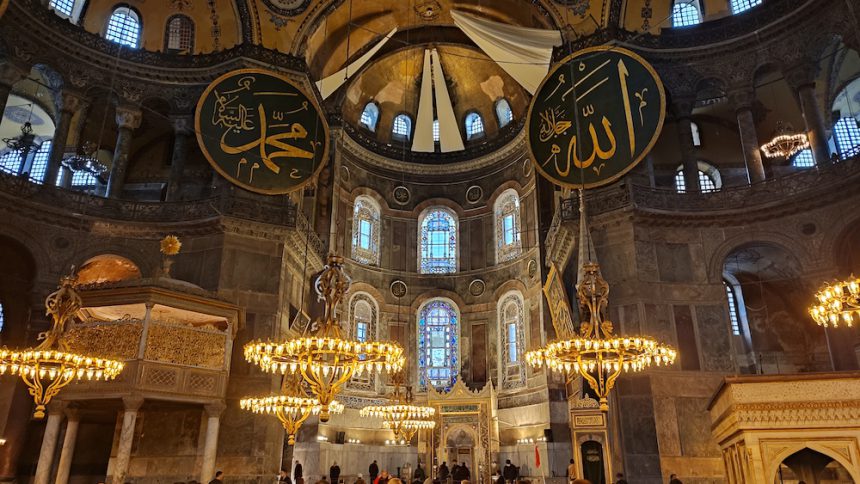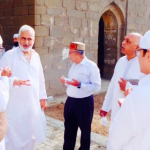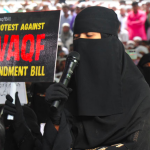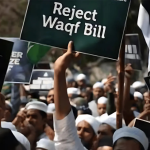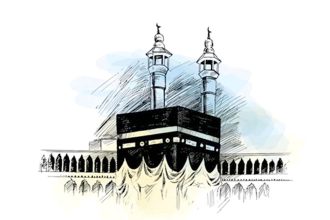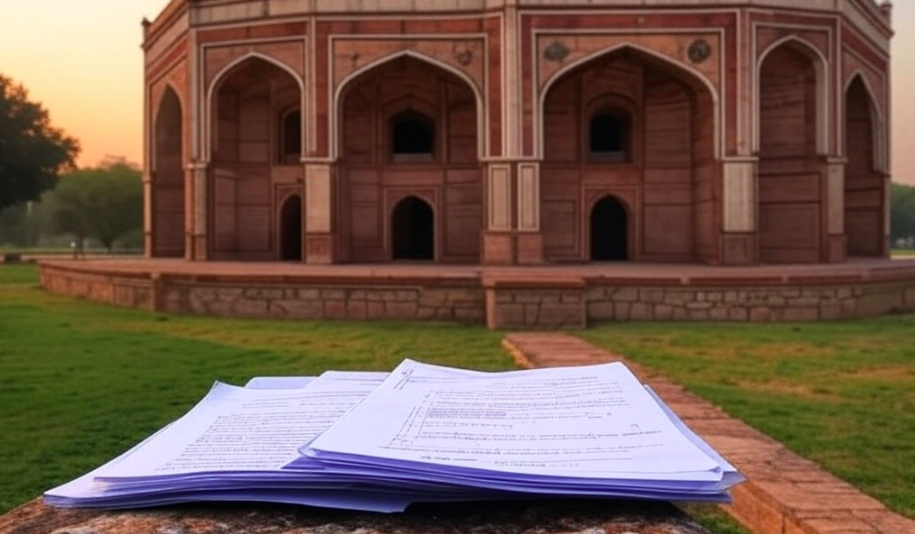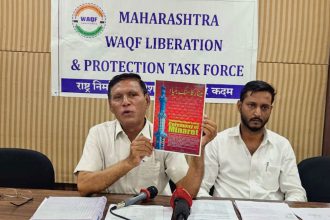This morning, a journalist friend called to inquire about the recently enacted Waqf (Amendment) Act 2025. The amendment, which modifies the Waqf Act 1995/2013 in relation to Muslims, has been officially implemented by the Government of India. It was passed by both the Lok Sabha (Lower House) and Rajya Sabha (Upper House), and signed by the President of India. This change to the Waqf law has sparked debates across the country, with protests erupting in various locations. One key question from my journalist friend was: “In Türkiye and Saudi Arabia, the Waqf is under state control, so why do Muslims in India oppose it?” It is the Government of India that has, in fact, played a role in raising this question in the public’s mind.
Since the fabricated propaganda of ‘Land Jihad’ against Muslims in India began gaining traction, a narrative has been spread—often citing Türkiye and other Muslim countries—that these nations lack a formal Waqf system. On 8 August 2024, when the Waqf (Amendment) Bill was introduced in the Lok Sabha, the Government of India issued an explanatory statement regarding the bill in the form of a question-and-answer document. One of the questions in this statement was: “Do all the Islamic Countries have Waqf Properties?” The response provided was: “No, not all the Islamic countries have Waqf properties. Islamic Countries such as Türkiye, Libya, Egypt, Sudan, Lebanon, Syria, Jordan, Tunisia, and Iraq do not have Waqf. However, in India, not only are Waqf Boards the largest urban landowners, but they also have an Act protecting them legally.”
On 2 April 2025, during the debate on the Waqf (Amendment) Bill in the Lok Sabha, Bharatiya Janata Party (BJP) MPs Sambit Patra and Nishikant Dubey stated in their speeches that many Islamic countries, including Türkiye, Libya, Egypt, Sudan, Lebanon, Syria, Jordan, Tunisia, and Iraq, do not have a Waqf system. However, the very next day, on April 3, 2025, in the Rajya Sabha, BJP President JP Nadda remarked: “In Türkiye, all Waqf properties were taken under the control of the state for better management and transparency. This was done in 1924, 100 years ago.”
It seems JP Nadda may not be aware that the Waqf system in Türkiye was well-established during the Ottoman Caliphate, and since 2008, many waqf properties have been managed independently and are no longer under government control.
Today, the Waqf in Türkiye is not merely a charitable institution; it serves as a vital economic agency. Far from being just a symbol of social welfare, it plays an integral role in the country’s economic development and overall prosperity.
It is also important to note that, prior to India’s partition, there was a demand for the establishment of a Ministry or Department of Endowments, modeled after Türkiye and other Muslim countries. According to a news report in The Times of India on 17 July 1928, during the September session of the Legislative Assembly in Simla, various unofficial resolutions were introduced. Among these was a resolution by Sir Abdul Halim Khan Ghaznavi (1876-1953), a member of the Central Legislative Assembly. The newspaper reported:
“Mr. Ghaznavi, who has already notified his intention to move for leave to introduce a Bill to amend the Musalman Waqf Act, has a resolution urging the appointment of a committee of officials and non-officials to inquire into the management for the Waqf administrations in India with a view to creating a Department of Pious Foundations like the Ministry of Waqf in Turkey and other Muslim countries.”
Further, in a The Times of India article dated 19 November 1929, it was reported, Mr. Ghaznavi again raised the issue of Waqf in the Legislative Assembly. “By another question, he pleads for the formation of a committee of officials and non-officials to inquire into the management of Waqf administration in India with a view to creating a Department of Pious Foundations like the Ministry of Waqf in Turkey and in other Muslim countries. It will be recalled that Mr. Ghaznavi has already a bill in the Assembly to achieve the same object.”
In Türkiye, there is a well-established system for managing endowments. The government agency responsible for overseeing endowments is the Vakıflar Genel Müdürlüğü (General Directorate of Foundations). One notable aspect of this system is that any individual in Türkiye can establish their own private endowment without government interference. A Turkish friend of mine recently brought this to my attention. It is important to note that in the Turkish language, the term for ‘waqf’ is Vakif, which is translated into English as ‘foundation’.
History of the Waqf System in Türkiye
Türkiye, as the successor state to the Ottoman Caliphate, has a long and rich heritage in the field of endowments. Since the establishment of the Ottoman Caliphate, Waqf were traditionally managed by their guardians—typically the individuals who founded them. After their death, the responsibility of administering these endowments would pass to their children and descendants.
According to Dr. Ozan Maraşlı of Istanbul Sabahattin Zaim University, the Ottoman Empire saw the existence of two primary forms of waqf (charitable endowments): privately established waqf and irsādī awqaf – state-sponsored endowments initiated by Sultans through allocations from the public treasury. These state-established waqf were administered by high-ranking officials such as the Sadr-ı A‘zam (Grand Vizier) and the Shaykh al-Islam (chief religious authority).
The management of Waqf was centralized in 1826 with the establishment of a special ministry for the two holy mosques of Mecca and Medina, known as the Ministry of Imperial Endowments (Evkâf-ı Hümâyun Nezâreti). This marked the first attempt in Ottoman history to establish a central board for managing waqf. Later, the scope of this ministry was expanded to include waqf created by the sultans, their families, and the pashas.
Maraşlı, who earned his PhD in 2022 with a dissertation titled The Economics of Awqāf in Türkiye, stresses that irsādī waqf differs fundamentally from traditional private waqf. While conventional waqf are established through private donations, irsādī waqf are initiated by the state, with specific government revenues allocated for public welfare purposes. In contemporary Türkiye, notable examples of irsādī waqf include the Social Aid and Solidarity Waqf, the Turkish Environmental Protection Waqf, and the Turkish Maarif Foundation.
As of 2018, Türkiye was home to 1,002 Social Aid and Solidarity Waqf, with at least one branch operating in each district. Their primary mission is to provide direct financial and material assistance to impoverished and vulnerable populations, addressing essential needs such as food, shelter, education, and healthcare.
On 2 May 1920, the first Grand National Assembly of Türkiye passed a law concerning the election of ministers, under which the Ministry of Sharia and Endowments (Şeriye ve Evkaf Vekâleti) was established, replacing the former Ministry of Imperial Endowments. While the old Ministry of Imperial Endowments remained active, particularly in the Istanbul region, during the early part of this period, the Ministry of Sharia and Endowments was abolished on 3 March 1924. A new institution, the Directorate General of Endowments, was then established under the Prime Minister.
The modern revival of Türkiye’s waqf system was significantly influenced by reforms initiated in the mid-20th century. As Murat Çizakça outlines in his research paper From Destruction to Restoration: Islamic Waqf in Türkiye and Malaysia, a new waqf law enacted in 1967 played a pivotal role in restoring the system. “Not only were the property rights of awqaf once again guaranteed,” Çizakça notes, “but also waqf-company links were strengthened.”
Building upon these reforms, Maraşlı highlights that the most recent waqf legislation was introduced in 2008. A landmark feature of this law was the requirement for all governmental bodies to restore previously seized waqf assets to their original owners. In Istanbul alone, 77 significant waqf properties were returned under this regulation. These included major religious, cultural, and historical landmarks such as the Süleymaniye Mosque, Fatih Mosque, Sultan Ahmet Mosque (Blue Mosque), Hagia Sophia Mosque, Hırka-i Şerif Mosque, Eyüp Sultan Mosque, Yeni Mosque, as well as iconic secular properties like Beşiktaş Vodafone Park Stadium (partial), Şişli Etfal Hospital, Adile Sultan Palace, Mimar Sinan Fine Arts University, Galata Tower, Mısır Çarşısı (Egyptian Spice Bazaar), and the Grand Bazaar.
Another significant initiative, led by the Directorate General of Foundations, involved the restoration of old waqf properties. By the end of 2018, approximately 5,250 waqf assets had been restored using the restore-manage-transfer or build-lease/manage-transfer models.
Today, there are five different types of waqf in Türkiye: Fused (mazbūt) Awqaf, New Awqaf, Annexed (mülhak) Awqaf, Minority Awqaf, and irsādī Awqaf. According to Maraşlı, as of August 2019, Türkiye had 52,000 registered mazbūt waqf, 5,268 new waqf, 256 annexed (mülhak) waqf, and 167 minority waqf.
Mazbūt waqf are endowments directly managed by the Directorate General of Foundations due to the absence of an administrator or trustee. Their primary source of income is rental revenue from waqf properties. These funds are used for a wide range of charitable purposes outlined in the original waqfiyyah (founding deed), including: Recitation of the Qur’an, food aid for the poor, needy, and travellers, scholarships for students at all levels of education, monthly stipends for orphans and persons with disabilities, establishment of schools, healthcare centres, and social welfare facilities, operation of public soup kitchens and medical treatment for poor and needy foreign patients.
The annexed (Mülhak) waqf constitutes another important segment of Türkiye’s waqf heritage. Dating back to the Ottoman period, these waqf were established before 1926 and continue to be managed by the descendants of their original founders, preserving a vital link between the past and present in the administration of charitable endowments. This immense network supports education, healthcare, social welfare, environmental protection, and cultural preservation across the country.
As of August 2019, 5,268 new endowments have been established in Türkiye since 1926. Among these, there are currently 73 endowment universities and four vocational higher education schools, with a total of 828,600 students enrolled. Some of these endowments focus on Islamic education, while many others have established primary and secondary schools, as well as preschool institutions, all of which have had a significant impact on the Turkish economy. Additionally, some endowments provide scholarships to high-achieving students in secondary and tertiary education. Many endowments have been created to support and encourage education, as well as to provide professional training and awareness for teachers.
An important and modern aspect of Türkiye’s contemporary endowment system is the emergence of ‘endowment companies,’ which are established not only for welfare purposes but also to generate economic value. This new form continues the tradition of endowments in a modern context.
Minority (community) Waqf, established by non-Muslim communities before the formation of the Turkish Republic, currently number 167 in Türkiye. These endowments belong to the Roman Orthodox, Armenian Orthodox, Catholic, and Jewish communities. They are dedicated to churches, monasteries, and schools and are also referred to as Cemaat Vakıfları.
According to the website of the Directorate General of Foundations (DGF), foreign foundations—those with their headquarters abroad and branches or representative offices in Türkiye—may, if they deem it beneficial for international cooperation, engage in activities, form partnerships, establish branches or representative offices in Türkiye, create higher institutions (such as federations), join existing higher institutions, or cooperate with already established foundations in Türkiye. This can be done with the permission of the Ministry of the Interior, after consulting the Ministry of Foreign Affairs and other relevant institutions when necessary, and based on reciprocity.
Additionally, the laws governing associations apply to the process of granting permission for foreign foundations to open branches or representative offices in Türkiye and to establish activities or partnerships within the country. All matters related to foreign foundations are carried out in accordance with the laws and regulations set by the General Directorate of Civil Society Relations.
Waqf Banks Established Through Cash Waqf in Türkiye
One of the most fascinating aspects of Türkiye’s contemporary waqf landscape is the rise of corporate waqf.
Türkiye also has a well-established cash waqf (endowment) system, which was initially designed to assist residents in paying property and other local taxes. These endowments collected funds from the public and, beyond tax relief, were used to support various social and community needs within their respective regions.
According to Ozan Maraşlı, during the period of the Demokrat Partisi (Democrat Party) in 1954, the Vakıf Bank (Waqf Bank) was established by using the capital of cash waqf.
Today, Vakıf Bank operates in every city across Türkiye and is recognised as the second-largest bank in the country by asset volume.
In addition to Vakıf Bank, Türkiye is also home to Vakıf Katılım Bank, which operates as a participation (Islamic) bank, further extending the legacy and function of waqf in the modern Turkish financial system.
Interestingly, another prominent bank in Türkiye, İş Bank (İş Bankası), is also linked to the Waqf system. It was established with donations sent by Indian Muslims in 1922. Historical documents in my possession show that people from my own hometown, Bettiah (West Champaran, Bihar), were among the donors. Mustafa Kemal Atatürk established this fund to help heal the country’s wounds after the war and used it as the foundation for creating İş Bank.
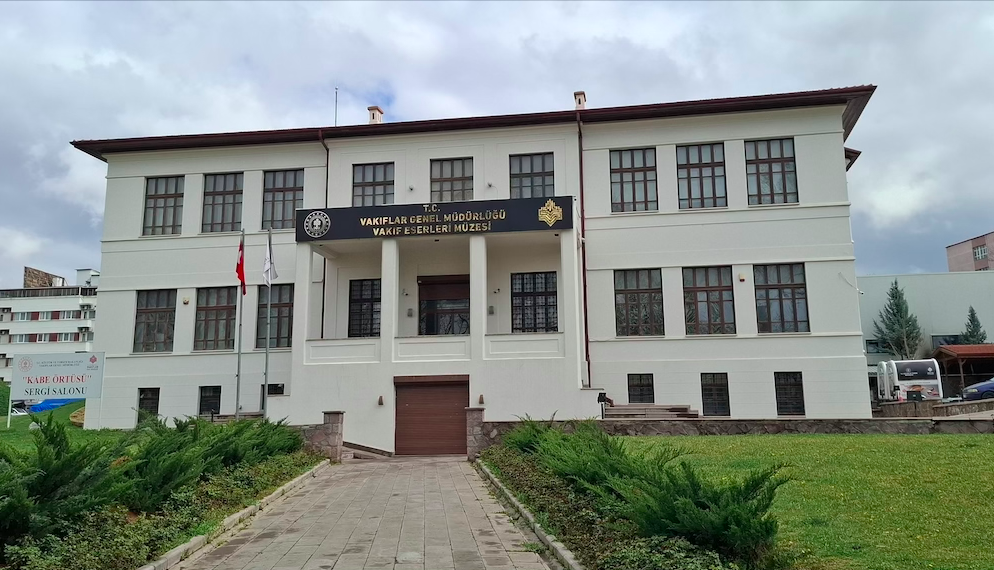
Eyewitness account of the Waqf Museum in Ankara
On the left side of the Melike Hatun Mosque in Ankara, the capital of Türkiye, is the Vakıf Eserleri Müzesi (Waqf Works Museum). After going inside this museum, it was found that this museum was nominated by the European Museum Forum in 2009. As soon as you enter, you will first see several important books, manuscripts and magazines on the Waqf system in Türkiye, which can be read to understand the Waqf system in Türkiye much better. Although most of the content in these is in Turkish, it provides a deep insight into the Waqf system. As you move inside, the museum exhibits various rare items, including carpets, doors, ancient clocks, historical vessels, calligraphy works, and rare manuscripts.
The same museum also houses the Masnavi of Maulana Jalaluddin Rumi, written in Persian by the dervish Mehmet Fahmi (Muhammad Fahmi) in 1272 AH. A visit to this museum reveals that from the 16th century until the first quarter of the 20th century, the shroud of the Kaaba, the holiest site in Islam, was sent to Mecca from the Ottoman Empire every year without interruption. On this occasion, a grand ceremony known as the Sûrre-i Hümâyûn was held in Türkiye. Initially, the shroud of the Kaaba, also referred to as the Sitare, was made in Egypt. However, during the reign of Sultan Ahmed I, its production was moved to the Ottoman Empire, where it was crafted under the supervision of the Imperial Palace in Istanbul. The shroud was then transported to the Kaaba by the Sûrre-i Alâi, the military unit responsible for delivering the donations collected by the Ottomans to the sacred site.
It is believed that two 18th-century Kaaba shrouds, gifted to the Kurşunlu Mosque in Nevşehir by Damat İbrahim Pasha, after his pilgrimage to Hajj, were stolen from the mosque in 2003. The General Directorate of Foundations reported the theft to domestic institutions, organizations, and other countries. When an attempt was made to sell the shrouds to an antique dealer in London, Francesca Galloway, the dealer sought the opinion of the museum at the Topkapi Palace regarding the items. The museum’s directorate informed the General Directorate of Foundations, and after an investigation, the Turkish Embassy successfully returned the historic Kaaba shrouds to the General Directorate of Foundations on February 24, 2004. These shrouds are now preserved in the same museum.
As I admired the beautiful carpets and rugs in the museum, I wondered about their connection to the concept of endowment. The discovery revealed that, in the past, it was a common practice to place carpets on the coffins of the deceased during funerals. After the burial, the family would often donate or dedicate these carpets to the mosque as an act of charity. These carpets, which not only have exquisite designs but also deep emotional and historical significance, are now preserved and displayed in the museum. In addition to those on display, hundreds more carpets are kept in storage. The primary mission of this museum is to preserve and showcase the legacies of those who contributed to the culture of waqf. Through these efforts, the museum aims to educate new generations about the greatness of waqf, its social importance, and its enduring impact.
Waqf System in Saudi Arabia
Saudi Arabia has a well-structured and efficient waqf management system. The General Authority for Waqf (GAA) is responsible for overseeing the maintenance and development of waqf properties, ensuring that they align with both economic and social development goals, while also safeguarding the original objectives of the waqf. Additionally, there is the Ministry of Hajj and Awqaf, as well as the Supreme Council for Waqf, which play key roles in managing and regulating waqf-related activities.
Saudi Arabia has taken the waqf system very seriously. In 1966, the country established the Waqf Department to specifically address matters related to waqf. The Waqf Department is tasked with planning and developing waqf properties, promoting approved waqf programs, and ensuring the distribution of waqf income to those in need, following the principles of the waqf system.
Saudi Arabia has taken significant steps to monitor and develop the waqf system, including the establishment of the Ministry of Hajj and Awqaf. This ministry is responsible for promoting and implementing waqf in accordance with the principles outlined in the Waqf. Additionally, the government created a High Council on Waqf to oversee waqf policy, which is chaired by the Minister of Hajj and Awqaf. The council’s members include Islamic law experts from the Ministry of Justice, a representative from the Ministry of Economy and Finance, the Director of the Department of Antiquities, and three intellectuals or journalists. This council has the authority to manage the income generated from the development of waqf properties and to determine measures for promoting waqf in line with its original objectives.
In Saudi Arabia, there are various types of waqf, including hotels, lands, residential buildings, shops, gardens, and places of worship. Some of these waqf are specifically dedicated to the holy cities of Mecca and Medina. The benefits derived from these waqf are directed towards the development of these two sacred cities, including the construction of residential housing, hotels around the Mecca and the Medina, and other facilities to accommodate the needs of pilgrims and Umrah visitors. These endowment properties are managed by the government, allowing the public, including foreign pilgrims, to directly benefit from the services and infrastructure they provide. The ongoing development in Mecca and Medina is a testament to the impact of these endowments. According to a study, as of 2020, the total value of endowment properties managed by the General Authority for Endowments (GAA) amounted to US\$63 billion.
Saudi Arabia has a well-organized and effective system of waqf, which is quite different from the system in India. It is important to note that Saudi Arabia does not operate under a democratic system, whereas India is a democracy. Therefore, the argument frequently advanced by Indian authorities—that ‘waqf in Türkiye and Saudi Arabia is also under state control’—is not only misleading but also fundamentally flawed. As demonstrated, the nature and practical implementation of the endowment system in both countries, often invoked for rhetorical or propaganda purposes, differ significantly from the Indian context.
Afroz Alam Sahil is a freelance journalist and author. He can be contacted at @afrozsahil on X.

